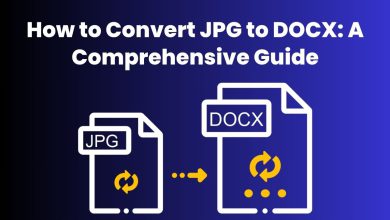
Geotargeting is the practice of delivering content, ads, and other marketing messages to specific geographic locations. It can be an effective way to reach customers where they are and increase the relevance of your marketing efforts. In this blog post, we’ll discuss how to use geotargeting in your marketing strategy.
Step 1: Define Your Target Market
Before you can start using geotargeting effectively, you need to define your target market. Without understanding who your ideal customer is, it will be challenging to deliver targeted messages that resonate with them.
To define your target market accurately, start by conducting market research. This research should help you uncover insights about your customers’ demographics and psychographic and geographic information. For example, if you are a local restaurant owner looking to attract more customers within a 10-mile radius of your establishment, then defining this geographic area must be central to your audience definition.
Once you have identified essential demographic information such as age range or income bracket about your target audience(s), it’s time to create buyer personas for each group.
Step 2: Identify Relevant Geographic Locations
Geotargeting is a powerful tool that allows businesses to target their marketing campaigns to specific geographic locations. By focusing on areas where your target market is likely to be located, you can maximize the effectiveness of your marketing efforts and increase your chances of success. In this article, we will explore step two in the geotargeting process: identifying relevant geographic locations.
The first step in identifying relevant geographic locations is to research your target market. This includes analyzing demographic data such as age, gender, income level, education level, and occupation. Once you have a clear understanding of your target market’s characteristics, you can begin to identify geographic regions where they are likely to be located. For example, if your product or service targets young professionals with high-income jobs, you may want to focus on urban areas with a high concentration of this demographic group.
Step 3: Determine Your Geotargeting Strategy
Once you’ve identified your target market and relevant geographic locations, the next step is to determine your geotargeting strategy. This can include a variety of tactics, such as:
- Geofencing: Creating virtual boundaries around a specific geographic location to trigger ads or notifications when a user enters that area.
- IP Address Targeting: Delivering ads or content based on a user’s IP address, which can be used to determine their approximate location.
- Location-Based Targeting: Delivering ads or content to users based on their physical location, as determined by their device’s GPS or other location services.
Step 4: Create Relevant Content and Ads
Geotargeting is a powerful marketing tool that allows businesses to deliver their message to the right people in the right location. However, targeting alone isn’t enough – you need to make sure your content and ads are relevant to your target audience. After all, there’s no point in getting your message in front of people if they’re not interested in what you have to offer.
To create effective geotargeted content and ads, you need to understand your target audience’s needs and preferences. This means researching their demographics, interests, and behavior patterns. With this information in mind, you can craft messaging that resonates with them on a personal level. For example, if you’re targeting young families living in suburban areas, focus on how your product or service can make their lives easier and more convenient.
Step 5: Measure and Optimize Your Results
Step 5: Measure and Optimize Your Results – Geotargeting in Your Marketing
Geotargeting is a powerful tool that can help you get the most out of your marketing campaigns. By targeting specific geographic regions, you can ensure that your message reaches the right audience. However, it’s not enough to simply use geotargeting – you also need to measure and optimize your results.
One of the best ways to do this is by using analytics tools. These tools can show you how many people are seeing your ads, where they’re located, and how they’re interacting with them. Armed with this data, you can make informed decisions about how to improve your campaigns.
Another important aspect of measuring and optimizing your results is tracking conversions. Whether you’re looking for sales or leads, it’s essential to know which campaigns are generating the most success.
Conclusion
Geotargeting can be a highly effective way to reach customers where they are and increase the relevance of your marketing efforts. By following the steps outlined above, you can create a geotargeting strategy that reaches your target market in relevant geographic locations, delivers relevant content and ads, and drives engagement and conversions.


